-
Can Ribas
A FAMILY WINERY FOUNDED IN 1711
Pedro Ribas de Cabrera builds a winery at the foot of the Tramuntana mountains in Mallorca, home of the family and where three centuries later wines are still being made.
Deep Roots
TEN GENERATIONS OF LOVE FOR THE LAND
The winery is part of a farm that used to produce olive oil and wheat, along with the vines, they were the main type of crops in the 18th Century´s Mallorca. Pedro Ribas de Cabrera built the winery in 1711, in Consell, close to the vineyard, marking the beginning of an activity that is still in the hands of the family since ten generations. His father, Pere Joan Ribas, had relocated by marriage to Consell from the Cabrera estate in Algaida.
Stone tanks for the wine fermentation and “botes congrenyades” (ringed barrels) for its storage were installed in the cellar. His son, Mateo Ribas is the one who set up the olive mill in 1774 and the family house in 1776.
Year 1877
MEDAL OF PERFECTION
It was the year of the great “National Wine Exhibition”, where more that 840 wines, liquors and vinegars were representing all the Spanish regions and among them a varied selection of wines from the Balearic Islands. All of them were evaluated thoroughly, through tasting and chemical analysis, by a wide and international jury of experts.
Mateo Ribas was honored to receive the medal of perfection, in recognition of a Gargollassa red wine, that contributed to give an impetus to the winery in one of the most complicated times for the wine industry, hit by the arrival of the filoxera plague.
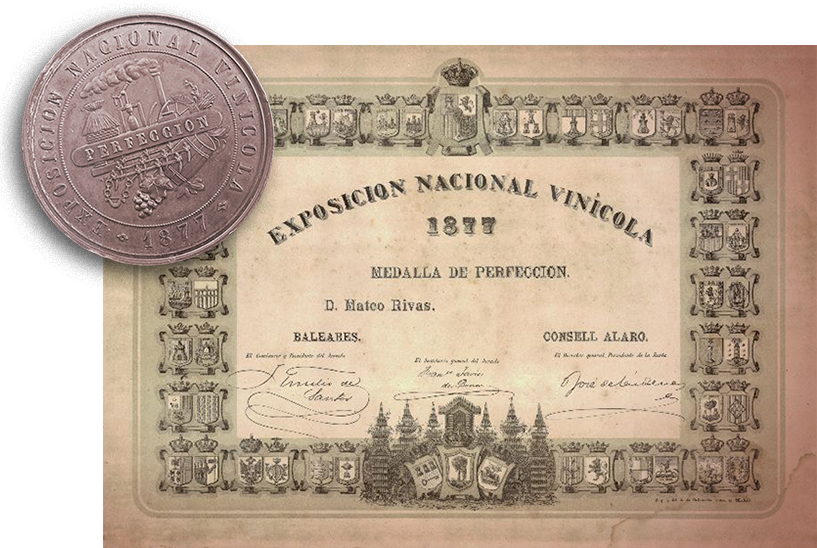
Year 1891
THE BATTLE AGAINST THE PLAGUE
At the end of the 19th Century, the phylloxera plague enters France and spreads though Europe, wiping out practically the whole vineyard. Mateo Ribas, fifth generation, registers in his notebook the havoc caused and the techniques to overcome it. When the plague arrived in Mallorca in 1891, the Ribas family previously imported American root stocks to graft new vines and proceeded with the replanting of the vineyards without interrupting the production.
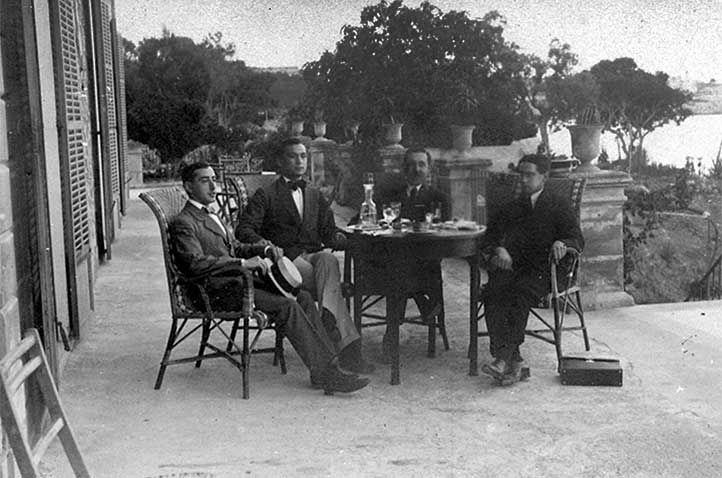
The Ribas family at the Maricel Hotel in Palma
The Twenties
THE FIRST PHOTOGRAPHS
At the beginning of the twentieth century, the young siblings José, Jesús, María and Juana Ribas lost their father, the nephew and successor of Mateo. With the help of the Colom family, experimented vintners, they managed the farm keeping up with the family's wine growing tradition. The concrete tanks were then built to expand the production.
The sale of the wines was done mostly in bulk at the winery itself or in a small shop that the Ribas family had in Santa Clara Street, in the old town of Palma.
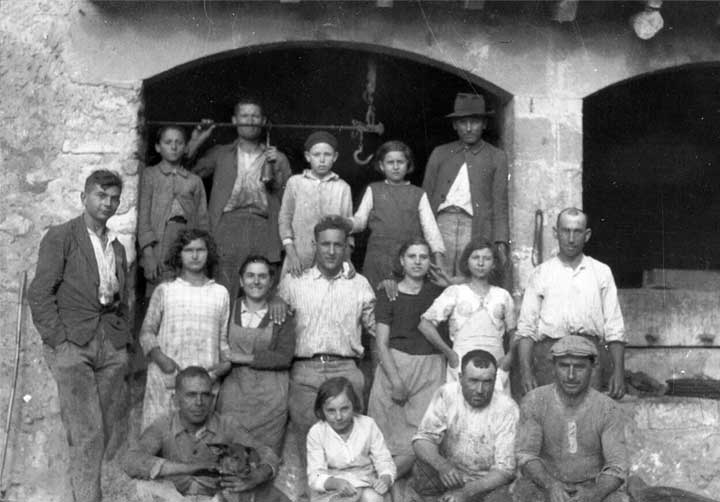
Harvesters next to the old tank
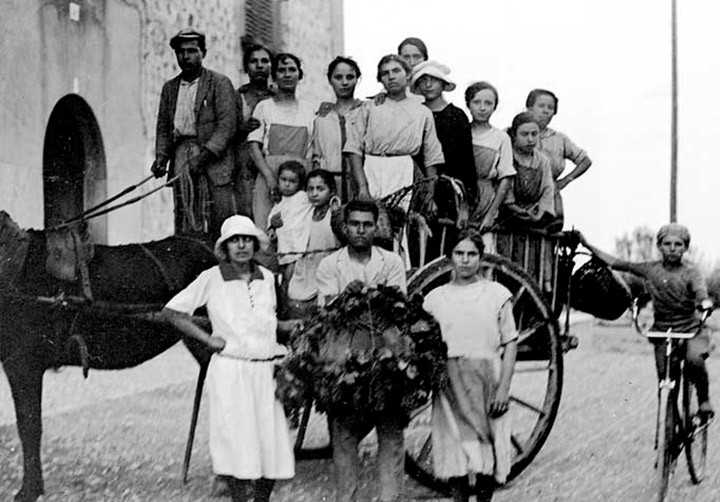
Harvesters next to the family house
The Eighties
THE GREAT CHANGES
From the very beginning, wines had been sold in bulk, and when Biel Oliver-Ribas received the winery in the 70s from his uncles, he carried on with the same tradition with the help of the Colom family.
His wife Sió, who gave her name to one of the main lines of wines of the winery, contributed to the winery by it passing on to their two older daughters. In 1984, the sisters Juana and Maria-Antonia, along with the winemaker Francisco Servera, led a crucial stage, in which the winery was transformed into a center of renovation and resistance before the retreat of the vineyards on the island and the first bottled wines were launched.
Pic: The Ribas siblings (left) and the Colom family (right)
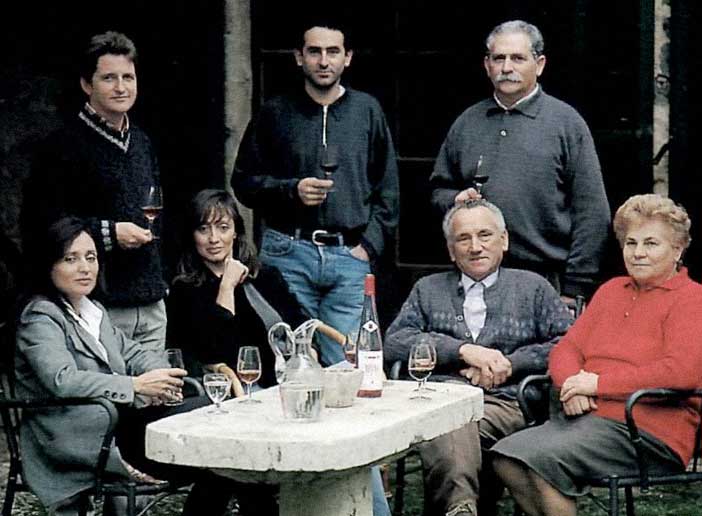
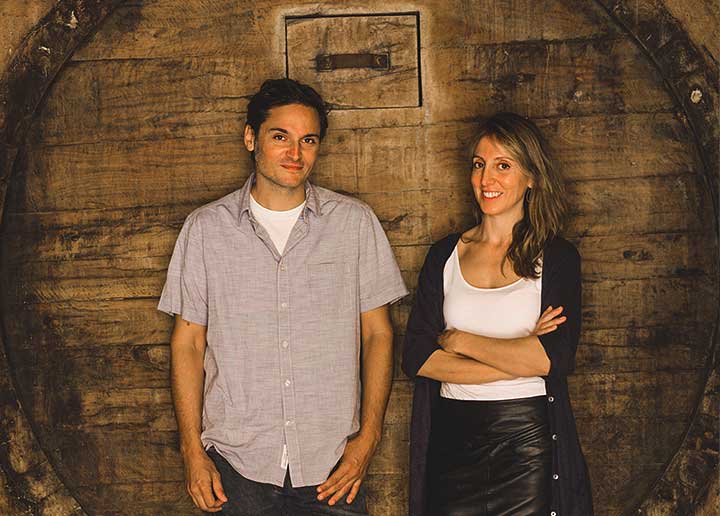
Year 2000
THE NEW GENERATIONS
The winery, then managed by María-Antonia Oliver-Ribas, took a new turn towards research to improve the native varieties as well as international expansion.
In 2004, the technical management was handed over to the winemakers Araceli and Javier Servera Ribas, children of María Antonia, who are tenth generation. New research projects were launched to reduce the environmental impact and the winery opened its doors to visitors through wine tourism.
Year 2019
CELEBRATING OUR HISTORY
The extension of the cellar executed by Rafael Moneo and the entry in the Grandes Pagos de España association allows us to continue this journey through time, in search into our own roots.



